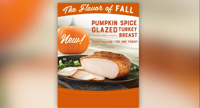(WEEK) -- Jumping worms are spreading across the state of Illinois. Yes, jumping worms.
The worms were just confirmed in Peoria County, but have been in southern Illinois for years.
A report from the University of Illinois Extension says the worms were identified in Illinois in 2015 and were confirmed in southern Illinois in 2016.
According to a map from the extension, the worms are in several counties in southern Illinois. The worms have been confirmed in Jackson, Perry, Johnson, Williamson, Pope, Gallatin and White Counties. The worms are suspected to be in Franklin and Saline Counties.
Also known as crazy worms, Alabama jumpers, or snake worms, the jumping worms can grow from 4 to 8 inches long.
"These worms are known to change the soil structure, deplete available nutrients, damage plant roots, and alter water-holding capacity of the soil. This is especially a concern in our forests, where organic matter is limited," a press release from the UofI Extension Office read.

How to spot them
They have a dark, metallic body that is darker on top than the bottom. A characteristic smooth milky, white band called the clitellum completely encircles the worm's body, unlike other earthworms with a pink, raised band. When handled, these worms will "jump" and thrash wildly. They move quickly in a snakelike manner and can shed their tails when threatened. Â
What to look for
Jumping worms are found in leaf litter and the top couple of inches of soil. Start looking for them in mid to late summer. Soil that looks like coffee grounds is a sign that jumping worms are present. One way to determine whether jumping worms are present is a mustard pour.Â
Mix a gallon of water with 1/3 cup of ground yellow mustard seed. Pour the mixture slowly onto the soil. This will drive the worms to the surface and does not harm plants. Â
Hardiness
Adults jumping worms cannot survive the cold winters of Central Illinois. However, the very small, dark egg casings persist through the winter. Jumping worms are parthenogenic, which means that a single jumping worm can reproduce by creating viable egg casings. Â
Damage
Jumping worms are voracious eaters, which causes them to grow twice as fast as other earthworms. This feeding changes the soil structure, altering the soil's water holding capacity and depletes the amount of nutrients available to plants. They also damage roots severely, causing weaker plants that are more susceptible to pests, drought, and disease. Â
Management
There are currently no viable control measures for jumping worms. Removing adult jumping worms to decrease the number of egg casings produced is the best control available at this time. Adults placed in plastic bags and left in the sun die quickly. Dispose of the bag in the trash.
Prevention is the key
The good news is that there are measures each of us can take to stop the spread. Â
- Thoroughly clean tools, shoes, and vehicles when moving from one site to another.
- Only purchase compost, mulch, or other organic matter that has been heated to appropriate temperatures and duration to reduce the spread of pathogens, insects, and weeds. Jumping worm egg casings do not survive temperatures over 104°F.
- Follow Plant Sharing Best Practices
- Do Not buy jumping worms for bait, vermicomposting, or gardens.

















